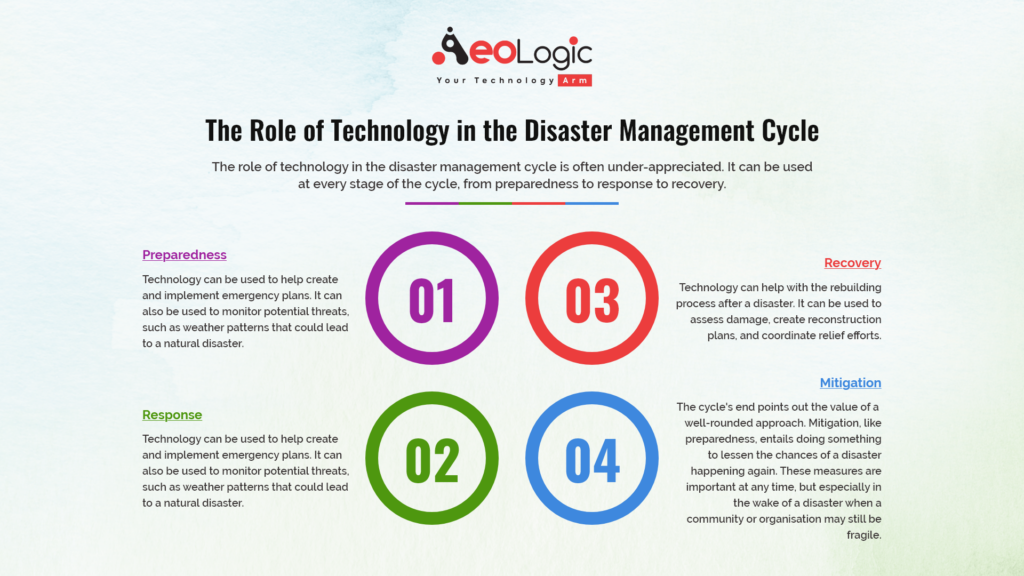

The Role of Technology in Disaster Response: A Game Changer in Saving Lives
Natural disasters, such as hurricanes, earthquakes, and tsunamis, have the potential to cause catastrophic damage and loss of life. The world has witnessed numerous devastating disasters in recent years, resulting in unprecedented human suffering and economic losses. In the face of such disasters, timely and effective response is crucial to minimize the impact and save lives. Technology has emerged as a vital tool in disaster response, playing a critical role in mitigation, preparedness, response, and recovery. This article explores the role of technology in disaster response, highlighting its benefits, applications, and challenges.
Mitigation and Preparedness
Technology can help mitigate the impact of disasters by providing early warnings, facilitating evacuation, and enabling preparedness measures. For instance, advanced weather forecasting systems and satellite imaging can predict the trajectory and intensity of hurricanes, allowing for timely evacuation and preparedness. Social media and mobile applications can disseminate critical information to the affected population, enabling them to take necessary precautions.
In Japan, the government has developed an advanced earthquake early warning system, which can detect seismic activity and provide alerts to the public within seconds. This system has saved countless lives by giving people precious time to seek shelter and precautions.
Response and Recovery
During the response phase, technology plays a vital role in rescue operations, damage assessment, and resource allocation. Unmanned Aerial Vehicles (UAVs), also known as drones, are increasingly being used to survey damaged areas, providing aerial footage and critical information to responders. UAVs can quickly identify areas of damage, locate survivors, and detect hazards such as gas leaks or fires.
Satellite imaging and Geographic Information Systems (GIS) can help responders to assess damage, prioritize resource allocation, and optimize logistics. For example, during the 2010 Haiti earthquake, satellite imagery was used to identify areas of damage and prioritize response efforts.
Communication and Coordination
Effective communication and coordination are essential during disaster response. Technology can facilitate communication among responders, affected communities, and stakeholders, ensuring a coordinated response. Social media platforms, such as Twitter and Facebook, have proven to be effective in disseminating critical information, soliciting donations, and providing emotional support to affected individuals.
In addition, technologies such as Voice over Internet Protocol (VoIP) and satellite phones can provide critical communication services in areas where traditional communication infrastructure is damaged or destroyed.
Data Management and Analytics
The vast amounts of data generated during disaster response can be overwhelming, making it challenging to extract valuable insights. Data analytics and visualization tools can help responders to process and analyze data, enabling informed decision-making. For instance, data analytics can help identify trends and patterns in damage assessment, resource allocation, and response efforts.
Challenges and Limitations
While technology has revolutionized disaster response, there are challenges and limitations to its effective use. Some of the key challenges include:
- Infrastructure damage: Disasters can damage or destroy communication infrastructure, hindering the use of technology in response efforts.
- Power outages: Power outages can render technology useless, emphasizing the need for backup power systems and solar-powered devices.
- Interoperability: Different technologies and systems may not be compatible, hindering coordination and communication among responders.
- Cybersecurity: The use of technology in disaster response creates cybersecurity risks, highlighting the need for robust security measures.
- Digital divide: The unequal distribution of technology and digital literacy can exacerbate existing social and economic inequalities, hindering the effective use of technology in disaster response.
Conclusion
The role of technology in disaster response is undeniable. From mitigation and preparedness to response and recovery, technology has the potential to save lives, reduce damage, and enhance the efficiency of response efforts. While there are challenges and limitations to its effective use, the benefits of technology in disaster response far outweigh the costs.
As disaster response efforts continue to evolve, it is essential to address the challenges and limitations of technology, invest in research and development, and promote international cooperation and standards. By leveraging technology, we can create a more resilient and disaster-ready world, ultimately saving lives and reducing the impact of disasters.
Recommendations
- Invest in research and development: Governments and organizations should invest in research and development to improve the use of technology in disaster response.
- Promote international cooperation and standards: International cooperation and standards are essential to ensure interoperability and efficiency in the use of technology in disaster response.
- Address the digital divide: Governments and organizations should address the digital divide by promoting digital literacy and access to technology in disaster-prone areas.
- Develop robust cybersecurity measures: Robust cybersecurity measures are essential to protect technology systems and data during disaster response.
- Conduct regular drills and exercises: Regular drills and exercises can help identify gaps and challenges in the use of technology in disaster response, enabling improvements and refinements.




